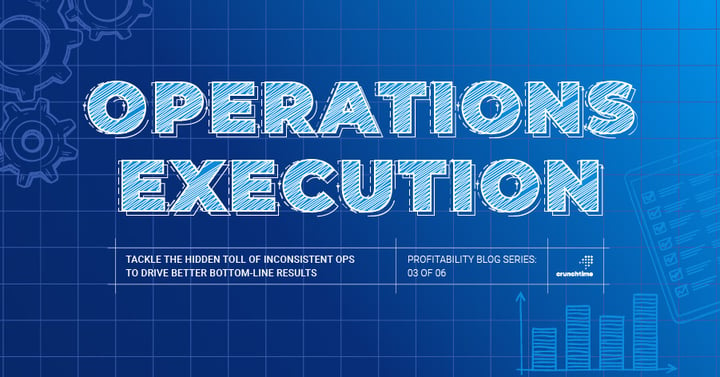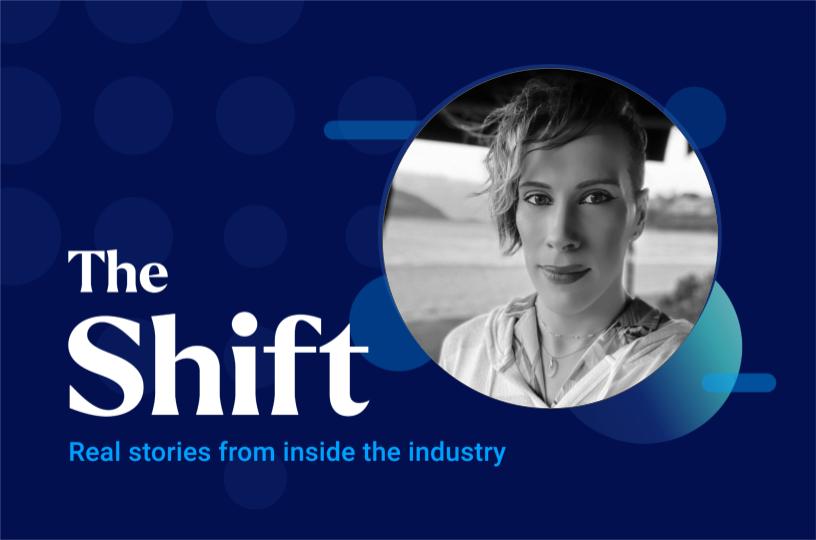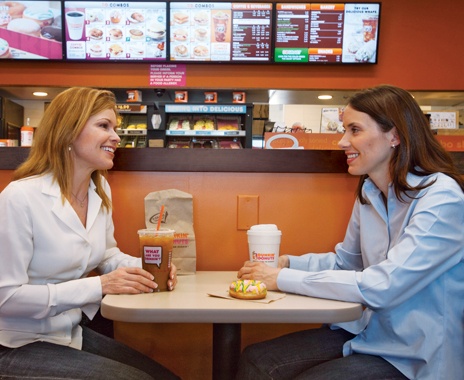
- Home
- Crunchtime Blog
- The Shift That Takes the Cake—Literally. And How It Improved Our Operations.

The Shift That Takes the Cake—Literally. And How It Improved Our Operations.
In this article, a defunct order-taking process leads to a disappointing customer experience and showcases the transformative power of prioritizing better processes for employees and embracing innovation.
My journey began in New York State as a restaurant manager at one of the world’s largest coffee and ice cream chains (you know, the pink and orange one). It didn't fall lightly on me that our customers chose us among a sea of other choices every time they walked through the door. Our store also happened to be not too far from where Kodak was founded, and we had a lot of Kodak employees as customers who became regulars.
Our store was a beacon of warmth and comfort amid often frigid temperatures and urban chaos—and that was thanks to our incredible team, who went above and beyond every shift to ensure that everything—from lattes to sundaes—was crafted to perfection.
This is a big part of what truly inspires me about the service industry—the people; my passion was fueled by the joy of turning a customer's bad day around, the personal connections with regulars, and the growth and success of my team members.
But, of course, a team can only do so much with the tools at hand and the support they receive from the top down.
Let me take you through the shift from my perspective.
Though we were more well-known for our coffee, our ice cream cake offerings were also a huge hit. However, at the time, orders for ice cream cakes were taken down by hand, with pen and paper.
And, as you can imagine, this was a recipe for disaster.

In this industry, you may think that nothing is worse than letting down a customer, but I can assure you that letting down your team truly takes the cake--pun intended.
One shift in particular, a regular customer came in to pick up a cake they ordered. As they waited at the counter, the small talk began to dwindle down, and I knew something was wrong. Amid all of the frosted treats chilling in the walk-in, there was no such cake to be found. Panic ensued.
I still vividly remember watching this all unfold; the desperation in my team’s eyes, and the disappointment on the customer’s face. My team searched binder after binder after binder, but no such order form was found.
The customer didn’t have enough time to wait for a new cake to be made and refroze (there are specific procedures to follow that require deep freezing). Now, they’d have to show up to their event empty-handed. Despite offering them complimentary coffee, donuts, pastries, and gift cards, none of it sufficed what that cake itself represented to the customer.
My initial reaction was frustration; how could we let something like this happen? Why are we doing it this way?
But it dawned on me that I shouldn’t be asking these questions, I should be answering them.
The team was doing it this way because it was all they knew. In talking with them about it, I discovered that they also found the process to be extremely frustrating; having to stop to find a piece of paper and a pen to take a cake order, with a line of customers out the door was not ideal, to say the least. I also came to find out that this wasn’t the first time this had happened, and was a recurring problem that was hurting both morale and business.
In a competitive market where pay, benefits, and work-life balance are crucial, understanding and accommodating the needs of your employees is paramount. A happy team ensures happy guests, which in turn affects the bottom line and customer retention.

We never ended up finding out what happened to that customer’s order form. But this entire ordeal provided me with a crash course in the significance of staff welfare, and the most profound lesson: the importance of taking care of your team.
It's about leadership, not just management, to help others achieve success.
If we wanted to keep our customers happy, we needed to keep our employees happy, not only with what they were doing, but also with how they were doing it.
This eventually led to the adoption of Squadle, a digital checklist system that improved our stores' performance and compliance, significantly reduced errors, and improved customer satisfaction, while also allowing me to monitor tasks remotely and efficiently. And, no more paper order forms.
Reflecting back now, the use of technology in the service industry, I believe, is non-negotiable. It offers a level of data and efficiency that pen and paper simply cannot match. It enables us to celebrate successes and quickly identify and address issues, fostering a safer and more compliant work environment.
I ended up staying with the (pink and orange) brand for over a decade. I relocated to Austin, TX, and was promoted from manager to trainer, then to district manager, and, eventually, to director of operations. From there, I wanted to continue innovating and supporting other businesses in their operational needs, so I joined the team at Squadle (now part of Crunchtime).
From those early days of hands-on management to leveraging technology for operational excellence, my story is a testament to the power of caring for your people and the transformative impact of embracing change and innovation in the service industry. I’m grateful for the pivotal moments that shaped my career path and the invaluable lessons learned from my time in the bustling world of the restaurant industry that I still use to this day.
![]()
About the Author—Skye Henderson is a Solutions Consultant at Crunchtime with a passion for people and innovation. Skye has 15+ years of previous experience working in the restaurant industry in the quick-service segment across a variety of roles, including district manager and director of operations.
The Shift is an industry-focused blog series from contributors who share their inside perspectives on life working in foodservice and restaurants. Click here if you're interested in sharing your story on The Shift.
Share this post
Related


The New Roles and Responsibilities of a Retail Operations Manager

.jpg)
